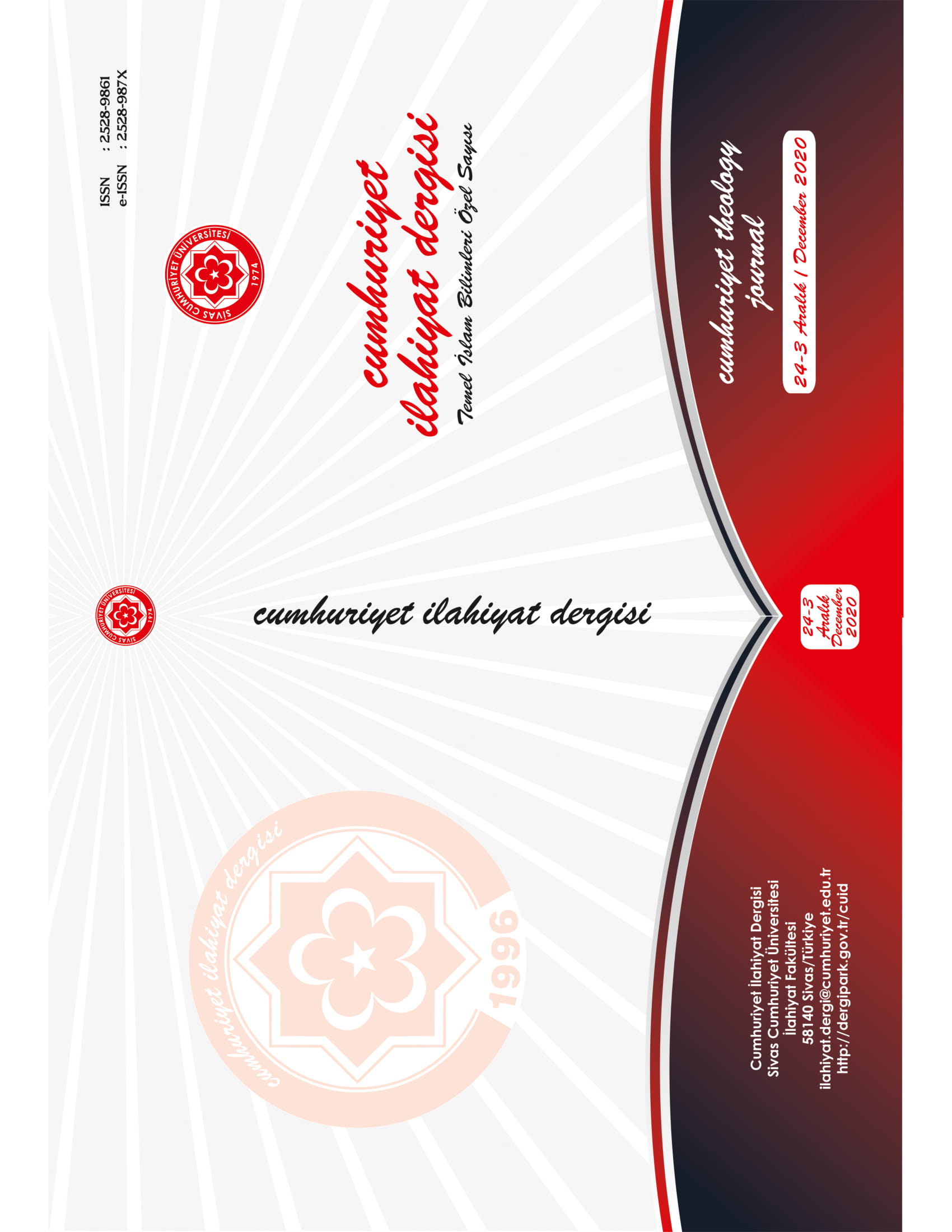İslâm Sanatının İrfânî Boyutları
The Lore Dımensıons of Islamıc Art
Author(s): Kadir ÖzköseSubject(s): Fine Arts / Performing Arts, Aesthetics, Islam studies
Published by: Cumhuriyet Üniversitesi İlahyat Fakültesi
Keywords: Ṣūfism; Gnosis; Art; Lodge; Aesthetics;
Summary/Abstract: In this article, it is often pointed out to a more specific area by using the term Ṣūfi art on the basis of the aforementioned understanding. Thus, an analytic approach is adopted along with the usage of deductive method, and a layer of meaning is tried to be established through criticism and analysis. Firstly, a basic framework was constructed by mentioning the origins of Ṣūfi art. Then the attention was drawn to the sacredness included in Ṣūfi art in terms of its historical frame and ontological structure. It is asserted that Ṣūfi art is based on four basic arguments: beauty, creativity, transcendence, and imagination. Ṣūfis considered art as an activity of beauty and the expressive power of it. Relying on the basic motive that Allah is the Greatest Artist, the Ṣūfis believe that the beauty of their art is a manifestation of Divine Names. They saw art as an expression of manifestation and unveiling. The Ṣūfis, who deemed the world in terms of Divine Beauty (Jamāl), witnessed the manifestations of the Divine Attribute of Beauty in all things; as a result of this witnessing, the masterpieces of Islamic art came into existence. It is the sapiental and the gnostic outlook that underlies this success of the Ṣūfi orders (tariqa) in Islamic history. In Ṣūfism, the perfection (kamāl) presupposes the beauty (jamāl); and each beauty presupposes also the perfection. Therefore, it is not possible to distinguish beauty from perfection in the Ṣūfi art. The sense of loving the beauty is so strong for them that they have tried to reflect the perfect beauty they witness in their works of art, to give an external presence to the phenomenon of beauty and to make the spiritual reality visible that is innate within their beings. Ṣūfism is in a sense an effort to seek beauty. It has been an endless longing to seek, search and witness The All Beauty, that is God Himself. The effort to search for Divine Beauty is sometimes revealed by tune, and sometimes by harmonious words or by a single line. Then, they turn into music, poetry, calligraphy and illumination. According to the maxim stating “There is a path from heart to heart”, these works were transmitted from one generation to another, ensuring the continuity of this Divine tune. Despite the fact that Ṣūfi works make no pretensions to be art as such, they were widely accepted, influenced the masses and gained appreciation in that they were created by people with a sincere heart, intimate sentiments and a deep world of contemplation. The second stage of the gnostic dimension in Islamic arts has been tried to be expounded through the ultimate goal of Ṣūfi art. In Ṣūfi tradition, the aesthetics and sensitivity of art attract attention at every opportunity, but the Ṣūfis did not consider art as their main aim. For them, art denotes only a means. Ṣūfis, who appeal to the eyes, ears and mind with the artistic forms, endeavoured to permeate to the hearts with the spiritual atmosphere provided. With their performances, exuberance and success in different branches of fine arts, they mobilized the aesthetic sentiments in each person's nature and ensured that the human pleasure become accorded with the divine pleasure. Focusing on the sapiential and gnostic dimension of Islamic arts, the basic principles of Ṣūfi art are emphasized as the third stage. It is also suggested that these principles also have a religious content are marked with religious style, have a strong sense of sacredness, possess generality and the peculiarity, have symbolic and representative aspects, are based on symbolism and have traditional characteristics, their style of expression is based on revelation, and are not intended to provoke carnal desires. As to the fourth remarkable factor within the sapiential and gnostic dimension of Islamic art, the Ṣūfi worldview behind the mentioned artistic works is given. As to the fifth remarkable factor in the gnostic dimension of Islamic arts, the thought behind the world of art sustained in the dervish lodges (tekke) is discussed. These dervish lodges were emphasized as the most important places where the beautiful word, beautiful sound and beautiful line converge and these lodges were evaluated as the kitchen where the fine arts were prepared and as the boiler where the arts are cooked. It is due to these features that each of the dervish lodges in Ottoman Empire became a kind of education and fine arts centre. In these lodges, many musicians, composers, poets, illuminators, bookbinders, carvers, engravers and marbling masters were trained. While the dervishes in the dervish lodges exhibited their own unique works of art, they also carried out the requirements of their spiritual trainings (sayru sulūk).
Journal: Cumhuriyet İlahiyat Dergisi
- Issue Year: 24/2020
- Issue No: 3
- Page Range: 955-971
- Page Count: 17
- Language: Turkish

